Coming atchya with a super simple recipe: grilled honey asparagus! This is the most common way we prepare it. It’s such an easy peasy side. Pair it with just about any protein/grain or toss it onto some grilled sourdough with shaved parmesan for a light, vegetarian weeknight meal.
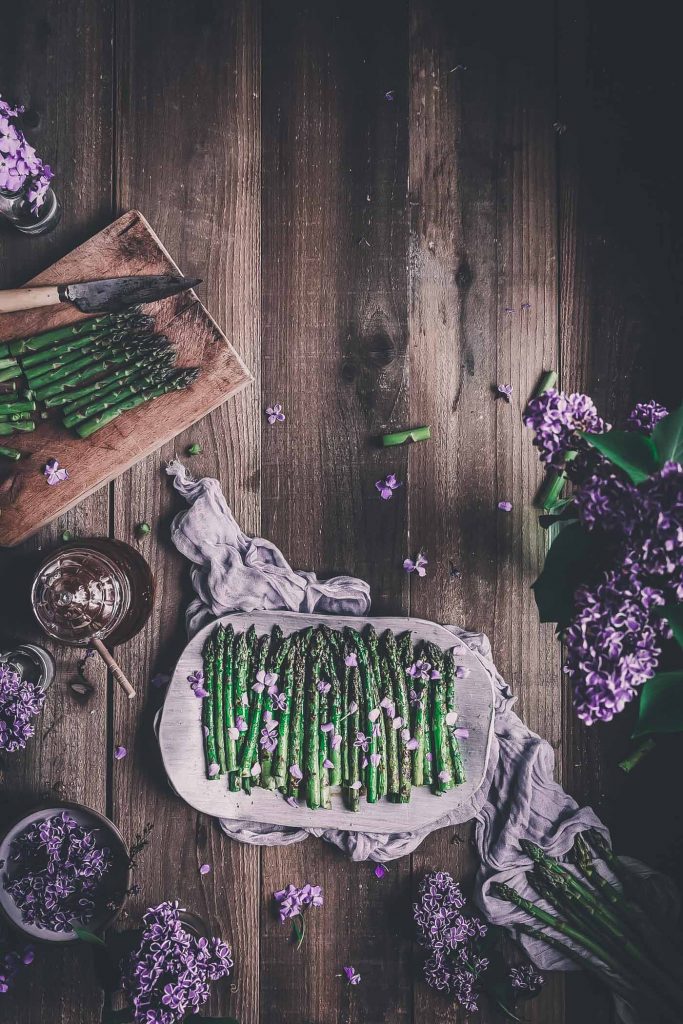
Asparagus: Seasonal Flavor
Asparagus season is one of my all-time favorite seasons. Once established, an asparagus patch is the gift that keeps on giving. They’re low maintenance and reliably return even in our busiest of springs. I love any plant that makes me look like a punctual gardener. Or fills my belly with grilled honey asparagus.
And although we absolutely love asparagus, it’s one of those veggies I rarely buy off season. There are so many reasons to eat seasonally, but the primary one is simple: it tastes *that* much better. Those store-bought spears pale in comparison to freshly-picked asparagus. We get our fill now, then patiently and longingly wait until the following spring.
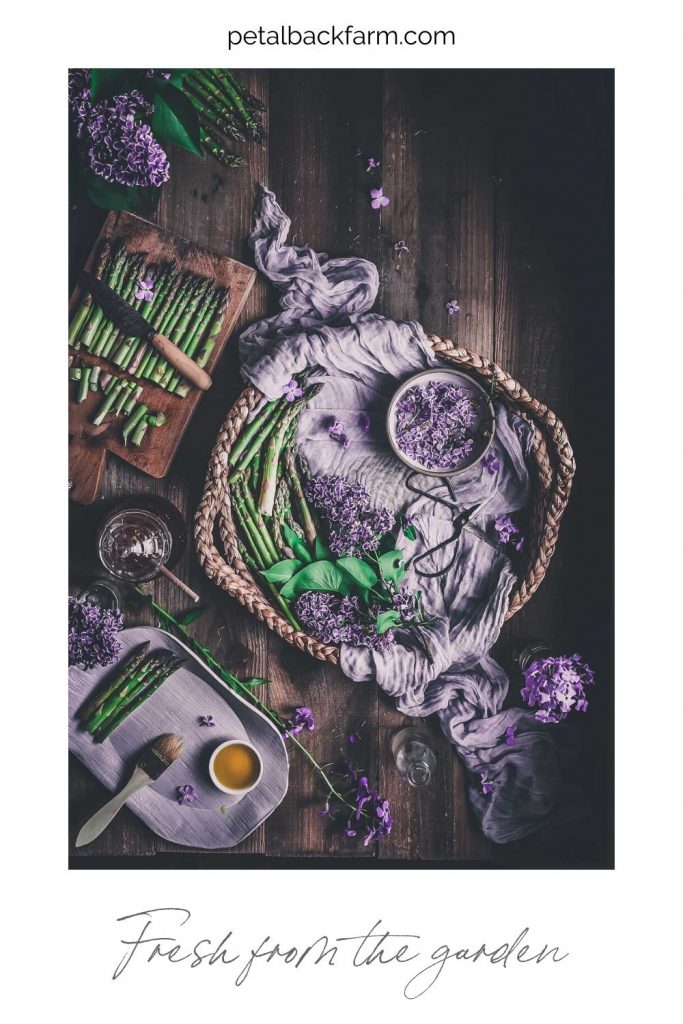
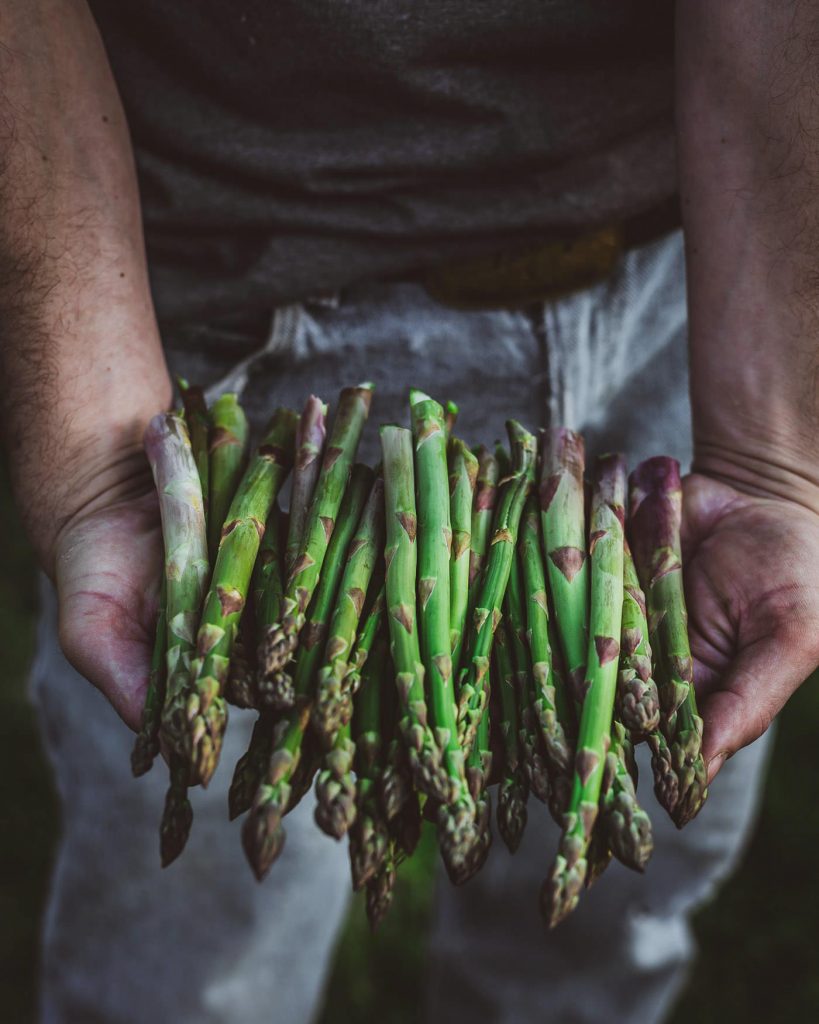
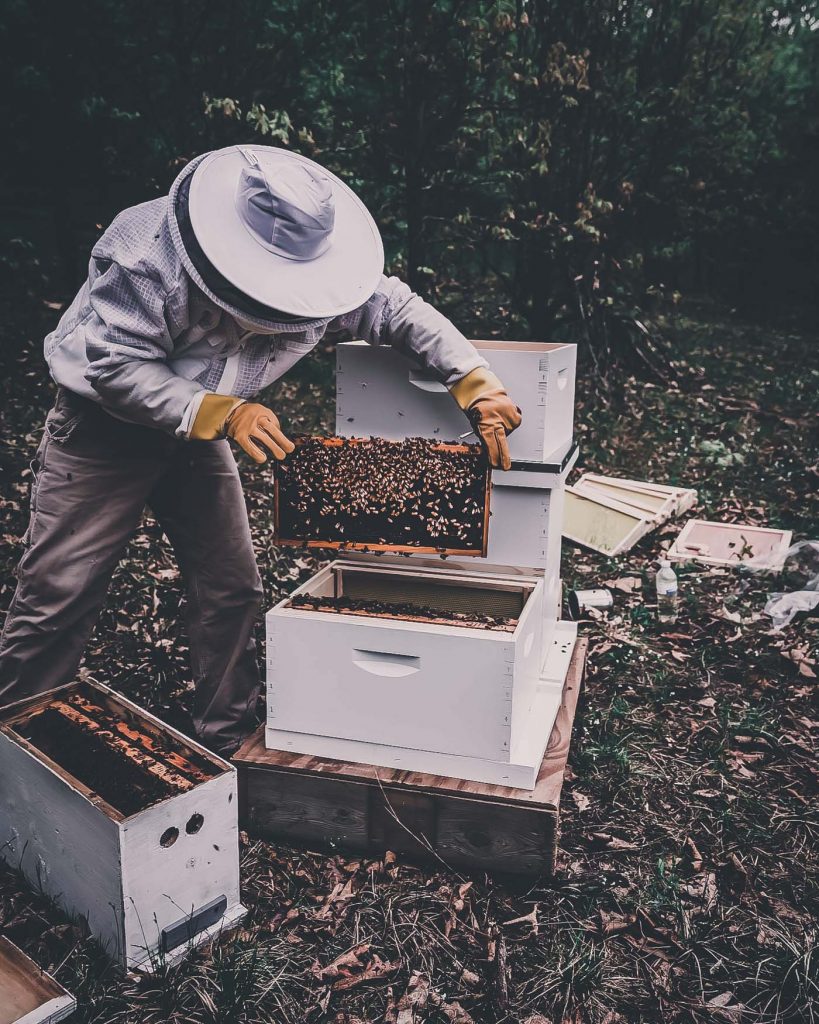

Asparagus: Fresh Is Best
The reason freshly-picked asparagus tastes so much better? Freshness + science. Personally, I believe one of the healthiest things we can do for ourselves is consume (or freeze) fruits and vegetables as soon after they are harvested as possible.
My friend, I know, this isn’t always feasible. Even when it is possible, it’s certainly not always convenient. Take it from a girl who considers frozen pizza a life saver. But if you can make it happen, it’s always worth it. And if you don’t believe me, believe science.
Transpiration & Respiration
Because here’s why. Most fruits and veggies have high water content when harvested. Asparagus, for example, literally drips water when you pick it. And once picked, it continues to live (i.e., it doesn’t immediately “die” once picked).
However, since it is no longer able to take up water from the soil, it must use the water that remains once harvested. This loss of moisture is referred to as transpiration.
Similarly, metabolic activity also continues, and the energy required to sustain this activity is referred to as the respiration rate. Respiration rates vary, and fruits and veggies with higher respiration rates are more perishable.
Compared to other vegetables, asparagus has a very high respiration rate. What this means is that it loses nutrition and flavor more quickly. This explains why fresh-picked asparagus tastes so amazing!
Asparagus Storage
But don’t worry if you’re not able to eat asparagus right away. By storing it properly, you can keep asparagus fresh for longer.
Simply place it upright in a jar with its stems submerged in water. Alternatively, wrap in a damp paper towel. Place either in the refrigerator. The moisture and refrigeration slow transpiration and respiration.

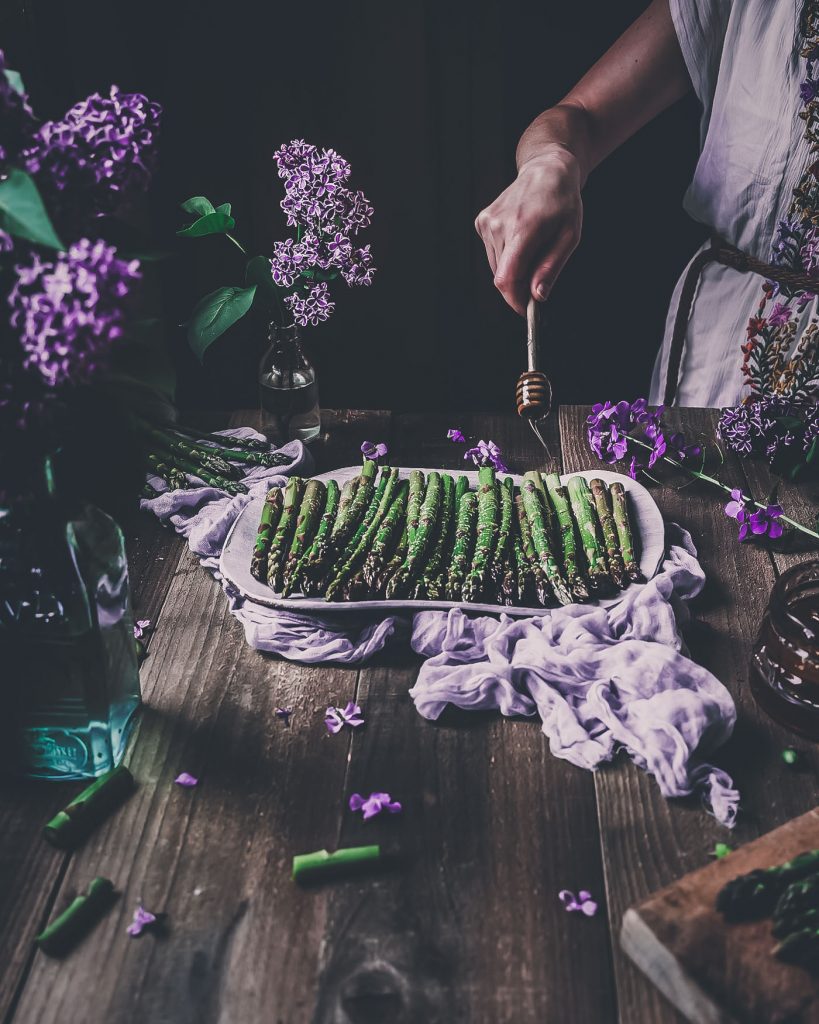
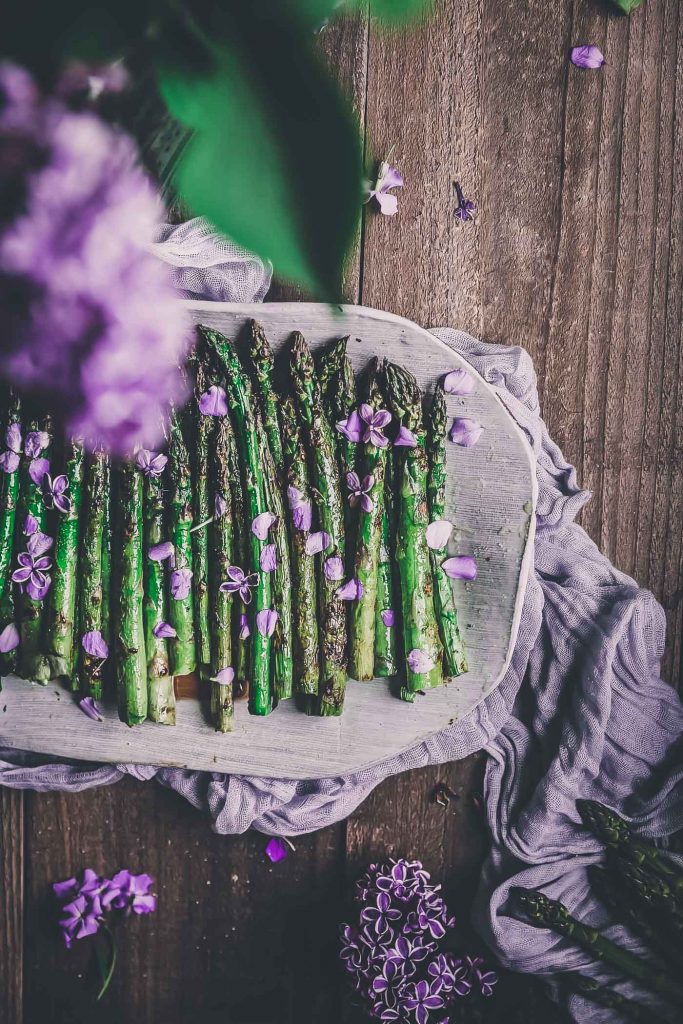
Grilled Honey Asparagus
OK, nerd stuff aside, what makes a simple recipe truly shine is fresh, peak-season produce. Learning this is what led me to gardening in the first place, after all. When your ingredients are high quality, you don’t need a complex recipe to make something truly delicious.
Grilled honey asparagus is a perfect example of this. No need for fancy sauces or techniques. Fresh asparagus, high-quality olive oil and honey, S&P, a little heat, and you’re set.


Grilled Honey Asparagus
Ingredients
- 1 lb fresh asparagus
- 1 tbsp extra virgin olive oil
- 2 tsp local honey
- garlic salt + pepper
- edible purple flowers, like violet, lilac, pansy, dame's rocket optional
Instructions
- Preheat grill to 400–450 degrees.
- Rinse asparagus and allow to dry. Break off woody stems if necessary. Brush asparagus spears with olive oil, drizzle evenly with honey, and sprinkle with S&P.
- Add asparagus to grill, grilling 1–2 minutes per side until slightly charred. Serve immediately.
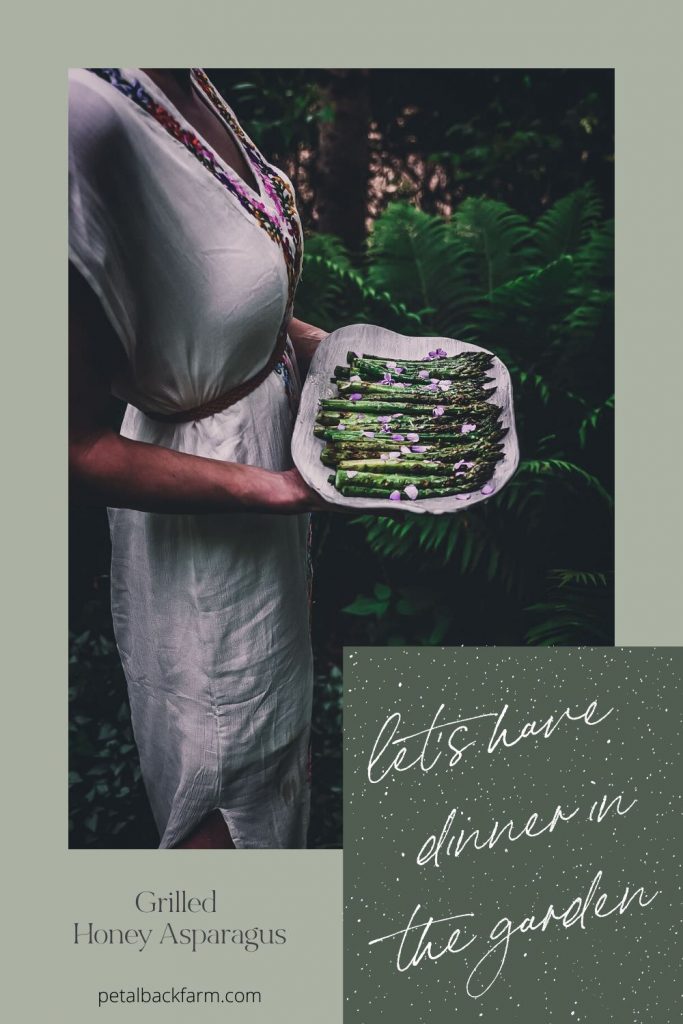
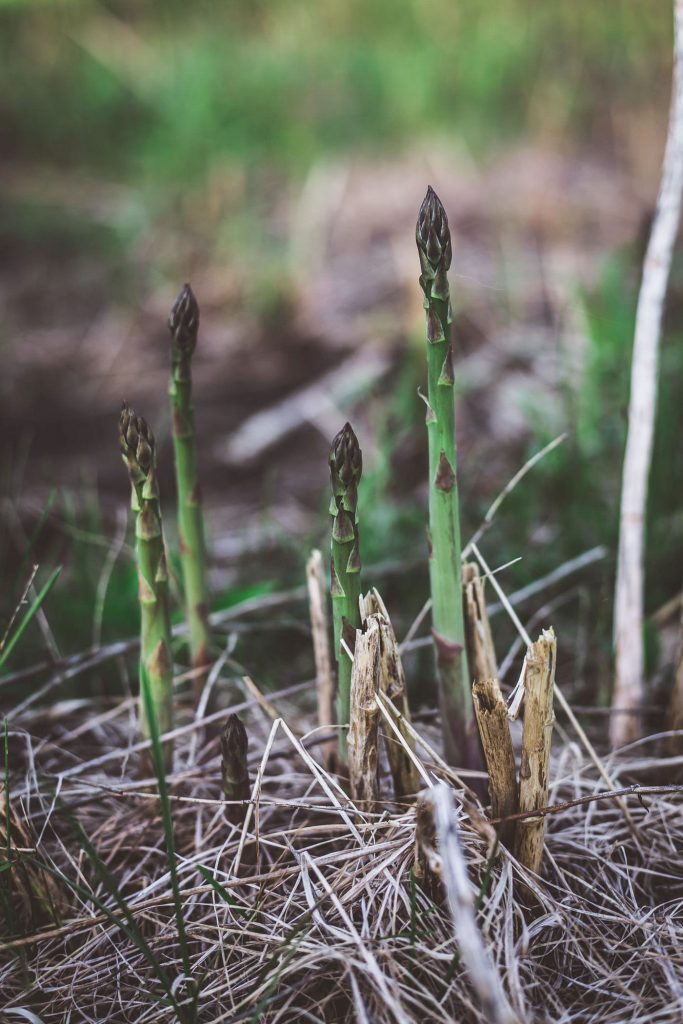

cLICK FOR Comments +